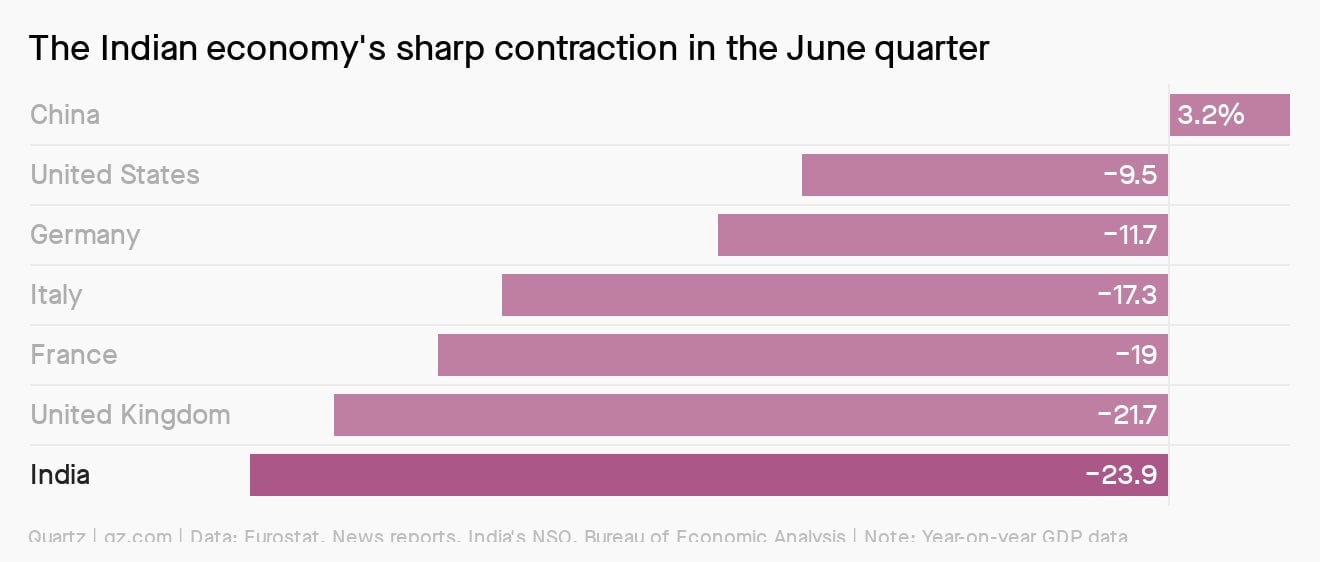Coronavirus: Ice ice… maybe?
Hello Quartz readers,

Hello Quartz readers,
“Mutually exacerbating catastrophes.” That’s how a new report from the Bill and Melinda Gates Foundation described the impact of Covid-19.
That a typically optimistic organization admits the challenge in such dramatic terms is telling, although hardly unwarranted. Infant and childhood mortality; maternal health; the financial sustainability of agriculture; HIV, tuberculosis, and malaria incidence; access to education; gender equality; availability of toilets and clean water: All of these global development indicators worsened in 2020, or showed no progress for the first time in decades. It took the coronavirus 25 weeks to put the world back about 25 years.
The Gates Foundation sees reason for concern, but not despair. If countries—particularly rich ones—are willing to sustain or even increase their commitment to the goals the United Nations set to be achieved by 2030, things can be turned around. “It will be very tough,” Gates Foundation CEO Mark Suzman says. “But it’s just about possible.”
Okay, let’s get started.
Putting it on ice
Over the past few months, industries in the US have had to contend with a troublesome carbon dioxide shortage. From May to July, beer brewers and soda makers across the country struggled to source the fizzy stuff.
But as summer turns to fall, a lack of CO2 could cause an even more problematic shortage: dry ice.
In early September, the New York Times reported that the CDC expects at least two Covid-19 vaccine candidates to require dry ice, the solid form of carbon dioxide, for transportation. In order to ship those vaccines, distributors will need to make sure industrial chemical plants can supply enough CO2 gas.
Dry ice is an ideal refrigeration tool for food and medical supplies: At ambient air pressure, it’s a chilly -79 °C (-110.2 °F). To make it, producers put purified CO2 gas under tremendous pressure.
But it’s hard to come by huge quantities of pure carbon dioxide, which is largely a byproduct of creating industrial chemicals like ammonia, ethylene oxide, and bioethanol. Plants that manufacture these products capture their excess carbon dioxide and sell it for use in other industries.
That’s how the CO2 supply got into trouble at the beginning of the pandemic: Demand for gas plummeted, and by April 34 of the 35 US ethanol plants that sell CO2 had closed entirely, or substantially cut their production. Since then, facilities in most regions recovered with the demand for gas. But CO2 shortages linger.
Although the CDC asked states to have vaccine distribution plans in place by the end of October, a vaccine will not be ready for wide-scale distribution at that point. Still, the deadline is an opportunity to identify and address all the supply chain bottlenecks that could disrupt a national rollout.
“Our members will make sure that vaccine production and storage gets a priority,” Rich Gottwald, CEO of the Compressed Gas Association, which supplies compressed gas to various industries, told Quartz. Gottwald is confident that meeting carbon dioxide needs won’t be a problem by the time vaccines really are ready.
I’m warning you
“Government officials who hold out the possibility of a stimulus when India finally contains the virus are underestimating the damage from a more shrunken and scarred economy at that point. Instead of claiming there is a V-shaped recovery round the corner, they should wonder why the United States, despite spending over 20% of GDP in fiscal and credit relief measures, is still worried the economy will not return to pre-pandemic GDP levels by the end of 2021.”
That’s former India central bank governor Raghuram Rajan, sounding the alarm bells (on LinkedIn, no less) after data showed that India’s economy contracted by a record 23.9% in the second quarter. Unless its government acts fast, India faces deep, structural economic problems.

You asked
Do temperature checks work?
Fever was identified early in the pandemic as a common symptom, but a growing body of evidence indicates that temperature checks may not be as effective as they seem. Studies have shown that more than a third of patients hospitalized for Covid-19 do not present with a fever, and an estimated 40% of those infected are thought to be asymptomatic. Temperatures can also vary during daily life, and depending on things like pharmaceutical use and recent activity.
Even Anthony Fauci, director of the National Institute of Allergy and Infectious Diseases and the US’s top coronavirus expert, has soured on temperature checks. “We have found at the NIH, that it is much, much better to just question people when they come in and save the time, because the temperatures are notoriously inaccurate, many times,” Fauci said in August.
Ring Pop Toss
Halloween may be fun, but it’s also big business: Americans spent an estimated $9 billion on the holiday in 2018. So it’s no surprise that a group of companies banded together for Halloween2020.org, which offers up recommendations on how to have a safer holiday.
Using a map of Covid-19 risk levels created by the Harvard Global Health Institute, the site proposes variations on Halloween activities. While its suggestions aren’t the same as public health recommendations (which you should consult), they do read like a sign of the times. Here are a few of our “favorites.”
🍬 Yeet the Treats. “Embrace the Millennial dictionary this Halloween and learn a new word that all the cool kids know… YEET! This trendy new lingo means to throw (something) forcefully in a specified direction. Homeowners will yeet candy from 6 feet away as costumed kids travel safely up and down sidewalks.”
🚗 Trick or treat in reverse. “Get the kids all decked out in their costume of choice and hang out with them in the front yard as neighbors walk or drive by and deliver candy!”
🧛 Dress for Dinner. “Don’t just wear the costume… become the costume! Plan a Halloween feast for your fam with one simple rule… everyone must stay in costume AND in character for the entire meal. Give each participant some time to come up with an accent and a backstory before the night begins then the laughter and the memories will be endless!”

Essential reading
- The latest 🌏 figures: 31.4 million confirmed cases; 21.5 million classified as “recovered.”
- Double trouble: Substance abuse makes Covid-19 even more dangerous.
- Au revoir: European workers are fleeing the UK economy.
- Pay to stay: Covid-19 is shaking up the citizenship-by-investment industry.
- Remote controller: Everyone is playing video games now.
Our best wishes for a healthy day. Get in touch with us at [email protected], and live your best Quartz life by downloading our iOS app and becoming a member. Today’s newsletter was brought to you by Annalisa Merelli, Katherine Ellen Foley, Prathamesh Mulye, Alex Ossola, and Kira Bindrim.